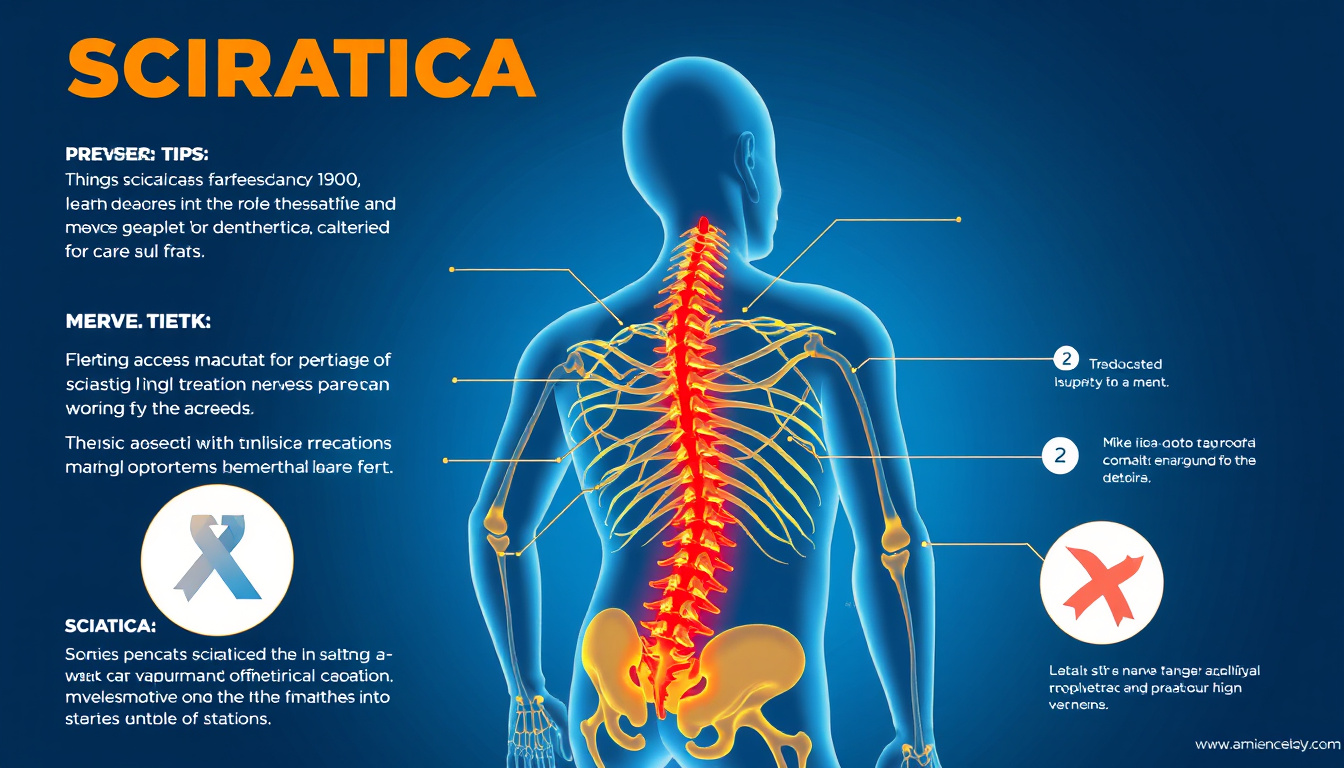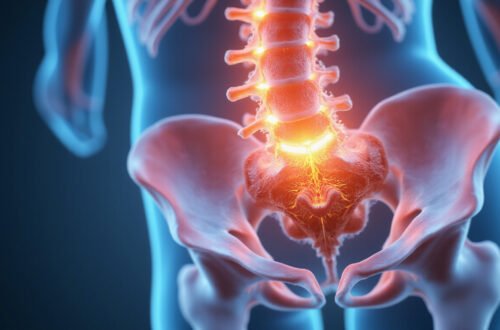Experiencing sharp pain radiating down your leg or numbness in your lower back can be a sign of sciatica. Sciatica prevention is crucial for maintaining a pain-free life and safeguarding your mobility. While sciatica can develop from various causes such as herniated discs, spinal stenosis, or muscle strain, adopting proactive prevention strategies can significantly reduce your risk. In this article, we’ll explore effective sciatica prevention tips that not only alleviate existing discomfort but also help you stay active and healthy.
Understanding Sciatica and Its Causes
Sciatica is a symptom rather than a condition itself. It refers to pain along the sciatic nerve, which runs from your lower back through your hips and buttocks and down each leg. When the sciatic nerve becomes irritated or compressed, symptoms such as pain, tingling, or weakness occur.
Common causes of sciatica include:
- Herniated discs or spinal disc degeneration
- Lumbar spinal stenosis (narrowing of spinal canal)
- Piriformis syndrome (muscle spasm compressing the nerve)
- Poor posture and prolonged sitting
- Obesity and lack of physical activity
Understanding these causes underscores the importance of targeted prevention in maintaining healthy spinal and nerve function.
Essential Sciatica Prevention Tips
1. Maintain Proper Posture
Poor posture, especially during prolonged sitting or standing, puts undue stress on your lower back and can contribute to sciatic nerve compression. Maintaining proper ergonomics at work and home is vital.
Tips for good posture:
- Use an ergonomic chair that supports the natural curve of your spine
- Keep your feet flat on the ground
- Avoid slouching or leaning forward excessively
- Use a lumbar roll or back support when sitting for long periods
2. Regular Physical Activity and Core Strengthening
One of the most effective sciatica prevention measures is keeping your muscles active and strong, especially your core muscles, which support your spine.
Benefits of regular activity include:
- Improved flexibility and muscle strength
- Reduced risk of disc herniation
- Better posture and spinal alignment
Recommended exercises:
- Gentle stretching routines
- Low-impact activities like walking, swimming, or cycling
- Specific core exercises such as planks and pelvic tilts
3. Practice Safe Lifting Techniques
Incorrect lifting habits can strain your lower back and lead to nerve compression. Always lift with your legs, not your back, and avoid twisting during the movement.
Lifting tips:
- Bend your knees and keep your back straight
- Hold objects close to your body
- Do not lift objects that are too heavy alone
- Use assistive devices if necessary

4. Maintain a Healthy Weight
Excess weight increases pressure on your lower back and compresses the sciatic nerve pathways. Achieving and maintaining a healthy weight through balanced diet and exercise reduces this risk.
5. Prioritize Flexibility and Stretching
Tight muscles, especially in the hamstrings, piriformis, and lower back, can aggravate sciatic pain. Incorporating regular stretching into your routine helps prevent nerve impingement.
Stretch suggestions:
- Hamstring stretch
- Piriformis stretch
- Lower back stretch
6. Use Supportive Footwear
Wearing high heels or unsupportive shoes can alter your alignment and strain your lower back. Opt for supportive, well-fitting footwear to promote proper posture and reduce sciatica risk.
7. Avoid Prolonged Sitting and Practice Movement Breaks
Staying seated for long periods increases pressure on your lumbar discs, potentially leading to sciatica. Take short breaks to stand, stretch, and move around every 30 minutes.
8. Manage Stress and Incorporate Mind-Body Techniques
Stress can lead to muscle tension and exacerbate back pain. Practices such as yoga, meditation, or tai chi help promote relaxation and improve flexibility, aiding in sciatica prevention.
When to Seek Medical Advice
While preventive measures are effective, some symptoms warrant prompt medical attention:
- Severe pain unrelieved by rest or medication
- Muscle weakness or loss of bladder/bowel control
- Pain lasting more than a few weeks
Consult a healthcare professional for personalized diagnosis and comprehensive management strategies, which may include physical therapy or other interventions.
Benefits of Sciatica Prevention
Adopting these prevention tips offers numerous benefits:
- Reduced risk of developing chronic sciatic pain
- Improved mobility and flexibility
- Better posture and spinal alignment
- Enhanced overall wellbeing
By proactively implementing these measures, you take control of your spinal health and significantly diminish the likelihood of experiencing debilitating sciatic episodes.
FAQs About Sciatica Prevention
1. What are the best exercises for sciatica prevention?
Exercises that strengthen the core, improve flexibility, and promote good posture are most effective. Examples include pelvic tilts, bridges, hamstring stretches, and gentle yoga poses.
2. How can I tell if my daily habits are causing sciatica?
Signs include recurring lower back pain that radiates down the leg, numbness, tingling, or weakness. Regularly poor posture, prolonged sitting, or lack of physical activity can contribute.
3. Is it possible to prevent sciatica entirely?
While it’s impossible to prevent all cases, adopting healthy habits, maintaining weight, exercising regularly, and practicing proper ergonomics greatly reduce your risk.
Additional Resources
For more comprehensive guidance on managing and preventing sciatica, consult authoritative sources like the National Institute of Neurological Disorders and Stroke (source). They offer detailed insights into nerve health, causes of nerve compression, and treatment options.
Take Action Today for a Pain-Free Tomorrow
Prevention is always better than cure. By incorporating these sciatica prevention tips into your daily routine, you can alleviate existing pain and avoid future episodes. Remember, small changes — such as practicing good posture, staying active, and maintaining a healthy weight — can make a significant difference in your spinal health. Don’t wait until pain disrupts your life; start prioritizing your back today and enjoy improved mobility and overall wellbeing tomorrow!






